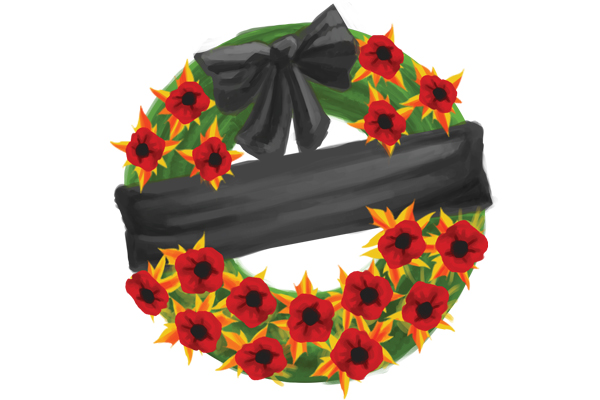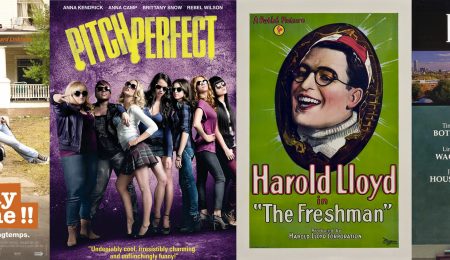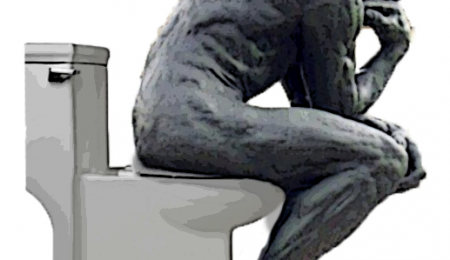In the week leading up to Remembrance Day, the Fulcrum takes a look at some of the biggest issues facing our veterans today.
Every Nov. 11 for the past 97 years, we’ve stood outside in the cold, with poppies pinned onto our lapels, to honour those men and women of the Canadian Armed Forces who have lost their lives, and are currently serving in military engagements.
While this holiday usually carries the reputation as being a universally benign affair, Remembrance Day in Canada carries a lot more baggage as of late.
Ever since Corporal Nathan Cirillo and Warrant officer Vincent Patrice were murdered last October, Nov. 11 now serves as an uncomfortable reminder of the uncertainty of our domestic security and skepticism surrounding what our soldiers are really dying for.
But perhaps this changing attitude was inevitable.
After all, in a post-9/11 world the fog of war has become increasingly opaque, and in light of certain policies that were passed in the wake of last October’s attacks, it’s more tempting than ever for some Canadians to approach this yearly ceremony with reservations—seeing it as an empty nationalistic enterprise.
But we should resist such temptations.
In light of the new shift in our political landscape, we should look at this upcoming Remembrance Day as an opportunity to remove such cynical thoughts from our minds, and refocus our attention on the issues that matter most to veterans.
For the Canadian military, the past is not the present
Of course, the tradition of Remembrance Day is intrinsically tied to our country’s proud military history.
Even though Canadian forces were deployed a number of times before the beginning of the 20th century, the yearly ceremony that we know today began on Nov. 11, 1919, one year after the armistice was signed to end the First World War.
While it initially started off as an event that was relegated to family members of fallen soldiers, the event picked up steam with the onset of further conflicts such as the Second World War (1939-45), and eventually became a fixture of national pride for Canadians everywhere.
Take a walk around Parliament Hill in Ottawa this time of year and you’ll see how this pride has embedded itself into the popular consciousness. Outside of awe-inspiring structures like the National War Memorial, there are a myriad of statues, busts, plaques, and seasonally appropriate book stores on display that recall past sacrifices made by Canadian soldiers, from the War of 1812 to the mission in Afghanistan.
This sentiment extends to the University of Ottawa campus as well.
According to Michel Prévost, the U of O’s chief archivist, “About 1,000 of our alumni went to participate in World War Two and more than 60 were killed.”
To commemorate their sacrifice, Prévost states that a plaque featuring the names of the fallen can be found at Tabaret Hall.
“It’s very important to the university to remind us that some of our students participated (in) wars and peace keep(ing) around the world.” said Prévost.
Of course, the narrative surrounding the deployment of our military has drastically changed over the past century.
The public’s traditional conception of warfare—one that showcases distinct enemies and a clear cut division of allies—has transformed drastically in the last half decade.
In the wake of the Cold War and the modern War on Terror, our military now has to contend with unidentifiable enemies who can’t be found on a map and hide away in the shadows.
“(Today) you don’t have set pieces where armies line up against each other, like in the Korean War. Instead you have this guerrilla, asymmetrical type of warfare where (enemy combatants) hide amongst the civilian populations, as the Islamic State is doing in Iraq and Syria,” said Errol Mendes, a law professor and human rights advocate from the U of O.
Because of this, large scale militaries such as the United States have increasingly relied on drones and other autonomous mechanisms to conduct warfare.
Even though the Canadian government does not have such a program, this development has led experts like Mendes to believe that the role of the traditional foot soldier is becoming obsolete.
“In the tribal areas in Afghanistan and Pakistan (drones are) being used almost exclusively as the method of warfare,” he said, explaining how the use of these autonomous war machines open up an ethical can of worms when it comes to accountability.
“There are some organizations who are basically saying hopefully we can ban this before it starts happening (everywhere), but I’m not sure it can be stopped.”
Despite these developments, Erin O’Toole, former minister of veterans affairs, believes that a soldier’s role in today’s climate has remained fundamentally the same in spirit.
“A young man or woman that is called to serve will do what’s expected,” he said while admitting that there has now been generations of soldiers who have never served in a theatre of war.
“They will prepare to serve because they put our country and their values before their own well-being, and that’s sort of at the heart of wearing a uniform and serving the country.”
Blue helmeted bad asses
While Canadian troops proved themselves to be fierce and formidable combatants in generations past, that reputation began to shift towards a much more humanitarian sentiment in the mid-1950s.
Under the leadership of future Prime Minister Lester B. Pearson, Canada quickly became a leader on the international stage for its participation in peacekeeping missions in the Middle East and Central America.
This tradition largely persisted for the next five decades. As of 1995, Canada was ranked sixth out of 84 countries for its contributions to United Nations’ peacekeeping missions.
However, that reputation has been in decline for more than a decade.
In the past ten years alone, the number of Canadian peacekeepers has decreased remarkably from a high of 3,300 UN personnel to 88. As it stands, Canadian troops haven’t made a major contribution to the peacekeeping community since 2000, when the government at the time sent 450 military personnel to intervene in the Eritrean-Ethiopian War.
As such, in lieu of threats of international stateless terrorism, Canada’s military has quietly slid back into a more traditional military mold.
This trend is evident in Canada’s participation in the fight against the Islamic State, a battle in which Canada has contributed seven CF-18 jets, ground support, and 600 personnel.
Mendes feels that this kind of new direction is inappropriate for our military, mostly because we’re not equipped for this role.
“Even in our combat role, it’s clearly a mess in terms of procurement for the essential needs of the military. We’re in trouble. I mean we lack… good naval vessels. We may lack serviceable aircrafts and helicopters. It’s a disaster.”
However, the new Liberal government has promised to re-establish Canada’s role as a peacekeeping nation, and has already informed the United States that Canada will stop bombing ISIS targets in Syria.
Throughout his campaign, party leader Justin Trudeau discussed how the Liberals will “recommit to supporting international peace operations with the United Nations.”
Whether or not the new government can follow through on these promises remains to be seen, especially since Mendes believes that this country has been out of the game for too long.
“We don’t have the money to be a major player anymore.”
Surviving the home front
While Remembrance Day is designed to commemorate those who have fought for the country for a 24-hour period, it’s important to remember that veterans have to sustain themselves for the remaining 364 days in the year.
And for the last decade or so, this has been a lot easier said than done, even on the home front.
Since its formation in 1944, Veterans Affairs Canada has provided Canada’s men and women at arms with financial services, health and well-being programs, and disability benefits to veterans and their families.
However, those services have become increasingly difficult to administer in past years, since offices have been closed, jobs have been cut, and benefits have been under minded.
That’s not even touching on Ottawa’s sluggish response to the epidemic of Post-Traumatic Stress Disorders (PTSD), a reality that leaves at least 10 per cent of our military personnel particularly vulnerable to depression and suicide.
Mendes is particularly critical of the unnecessarily complex way that the government hands out lifetime pensions to veterans, which used to be dispersed on a monthly basis, but is now administered through a lump sum payment.
“If you receive a lump sum and it runs out, what else do you live on if you’re disabled or you have PTSD?”
If a recent Globe and Mail investigative report by Renate D’Alieso is to be believed, then the answer to that question is that a lot of veterans don’t.
According to the article, the number of suicides of Canadian veterans of the War in Afghanistan currently stands at 54, which is over a third of the amount of soldiers who actually died during the campaign itself.
Justin Trudeau has promised to restore access to the support of veterans. “We will re-open the nine Veterans Affairs service offices closed by Stephen Harper, and will fully implement all of the Auditor General’s recommendations on enhancing mental health service delivery to veterans.”
But again, given the mess that Veterans Affairs finds themselves in, this is definitely a tall order.
More than just statistics
At the end of the day, while Remembrance Day still has a reputation of being a universal affair that touches everybody, it affects each individual differently.
But in the eyes of Les Peate, a past member of both the British Armed Forced and Canadian Armed Forces who served in the Korean War, Nov. 11 is much more of a personal affair.
“Remembrance Day is really a time that you particularly remember the individual friends who died,” he said, recalling the callousness with which we consume casualty numbers in the media.
“You’re just looking at the figures, the faceless figures, but each one of those statistics is a person. At one time they meant something to somebody and I think this is one of the things we forget.”
So, however you celebrate Remembrance Day this year, keep in mind that sometimes a soldier’s greatest feat isn’t on the battle field, but finding support on the back home.





